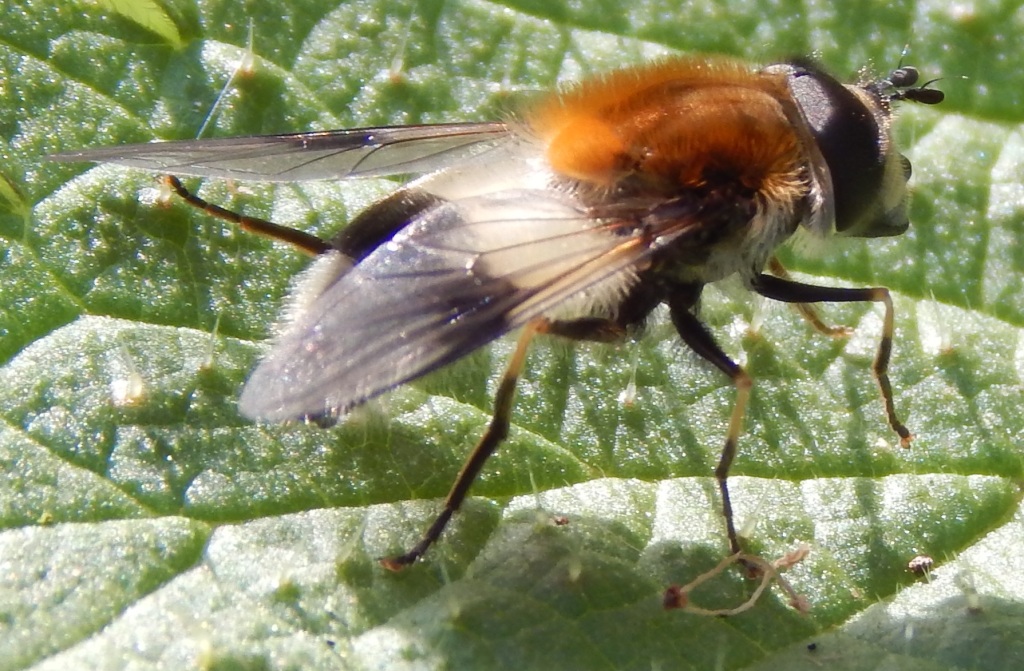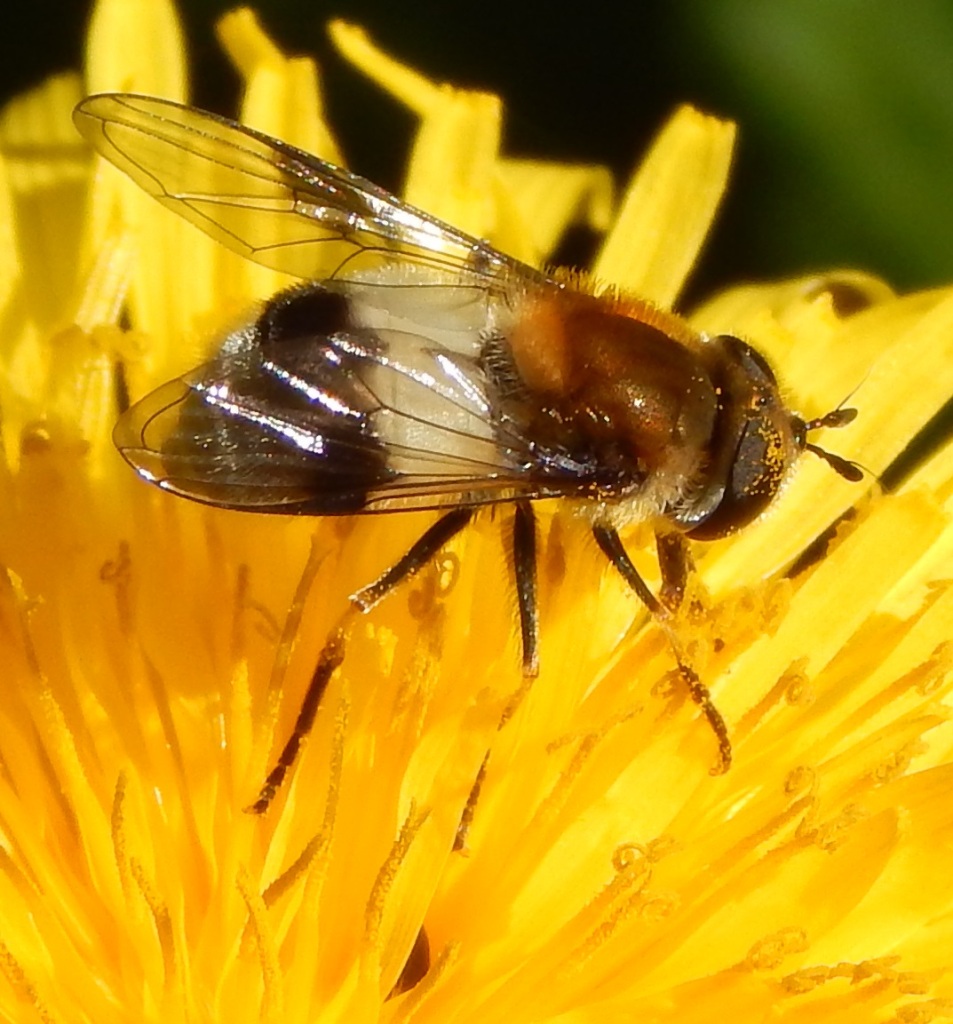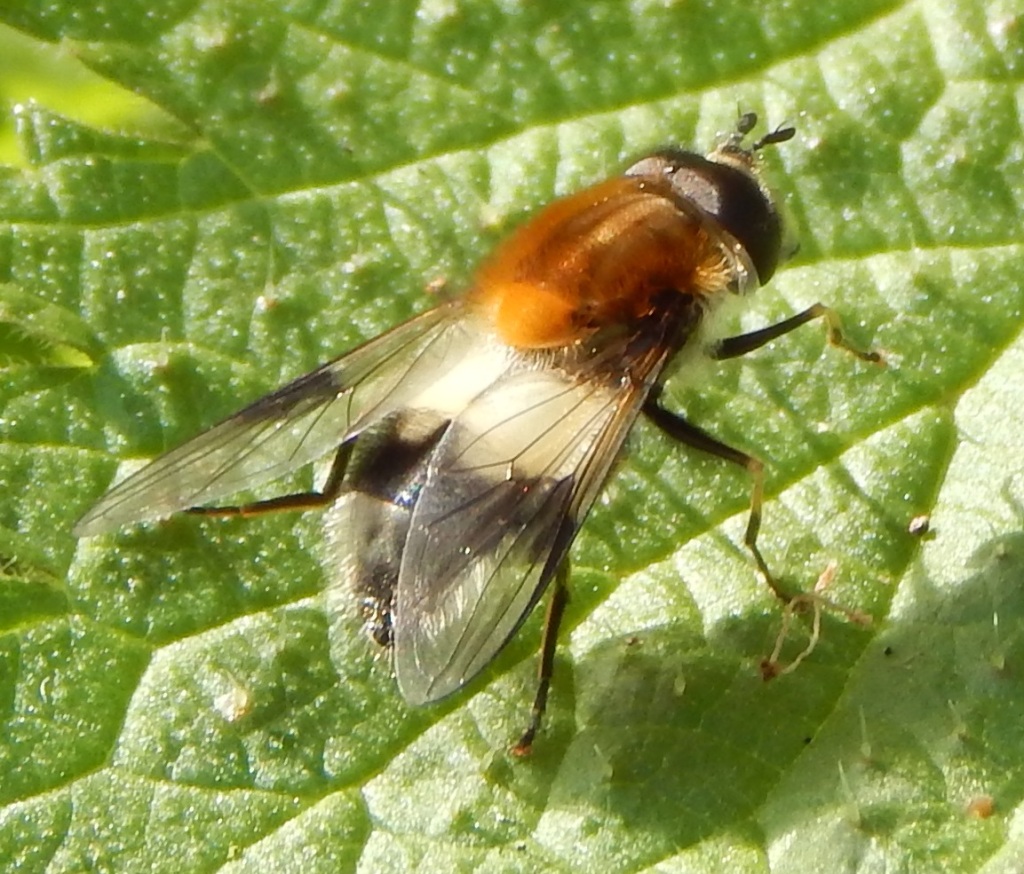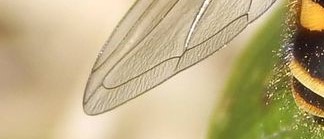
[333] Syrphus ribesii and Other Hoverflies
Introduction
Syrphus ribesii is one of about 6 000 species in the 200 genera that make up the family Syrphidae called Hoverflies (or Flower Flies.) Most of them don’t have common names. Syrphus and Eristalis are two of the main genera.
About 250 species of hoverfly are commonly seen in the UK. I have recorded over thirty species, mostly seen in my back garden. Most species are primarily black and yellow striped with transparent wings and they are best identified as hoverflies by their wing vein structure.
Taxonomy
Kingdom – Animals
Phylum – Arthropods
Class – Insects
Order – Diptera (Flies)
Suborder – Brachycera
Infraorder – Muscomorpha
Clade – Aschiza
Superfamily – Syrphoidea
Family – Syrphidae
The family is divided into subfamilies, tribes and subtribes.
Syrphus and Eristalis (about 100 species) are two fairly common genera. Many other genera have names derived from syrphus.
Names
Hoverflies really do hover very well and they do it often.
The Ancient Greek surphos was a gnat or winged ant. (You remember that U and Y are often interchangeable in Greek words.)
Eristalis has been used as the name of a genus since 1804, with no apparent etymology. It was so unknown that for two hundred years its grammatical gender was uncertain. In 1901 it was asserted as masculine but many countries still treated it as feminine. In 1993 it was officially confirmed as masculine. But around 2005 the word was found as an existing feminine Latin word referring to an unknown precious stone – so it is now officially feminine. The grammatical gender sometimes affects the ending of the species epithet. (The spelling of a genus or species can’t be changed just because it is incorrect but species epithets are changed to get the Latin gender right.) See Taxonomy and Names.
Hoverflies
You can read a little about flies in general at [053] Bee Fly. Hoverflies are often seen hovering perfectly. Adults almost all feed on nectar and pollen from flowers. Larvae, often called maggots, can feed on decaying vegetation and animals, other insects or plants.
The species vary in size but many are colourful, often mimicking other insects. A large proportion of them have yellow stripes making them look somewhat like bees or wasps.
The general way to identify a fly as a hoverfly is by two structures in the veins of their transparent wings.
- Veins merge to a false edge, a vein running parallel to the edge of the wings.
- A spurious vein runs parallel to the fourth longitudinal wing vein.
The family Syrphidae is divided into three subfamilies and several tribes. The main tribes are Syrphini (in the subfamily Syrphinae) and Eristalini (within Eristalinae.)
Individual Species
Sometimes identification to species is fairly easy from a good photograph and sometimes it’s impossible. If you want to tell the species apart, expect to have to examine every part of the body including every segment of every leg for colour, and count the spikes and hairs on every segment of every leg.
Some genera need microscopic surgical examination, usually on the genitalia, to determine species. Sometimes females are easy and males need close examination – or vice versa. (Male flies generally have much larger compound eyes that meet in the middle.)
All of my pictures are identified, or at least confirmed, by checks in the Facebook group on British Hoverflies. In most cases I will show you the pictures and tell you the species without saying any more. By an amazing coincidence I seem to have all the very common species!
[A] Syrphus Species
There are dozens of species of Syrphus, all looking very similar. Syrphus ribesii, Syrphus torvus and Syrphus vitripennis are common in the UK, of which S ribesii is most often seen. Females are easier to identify than males without microscopic examination.
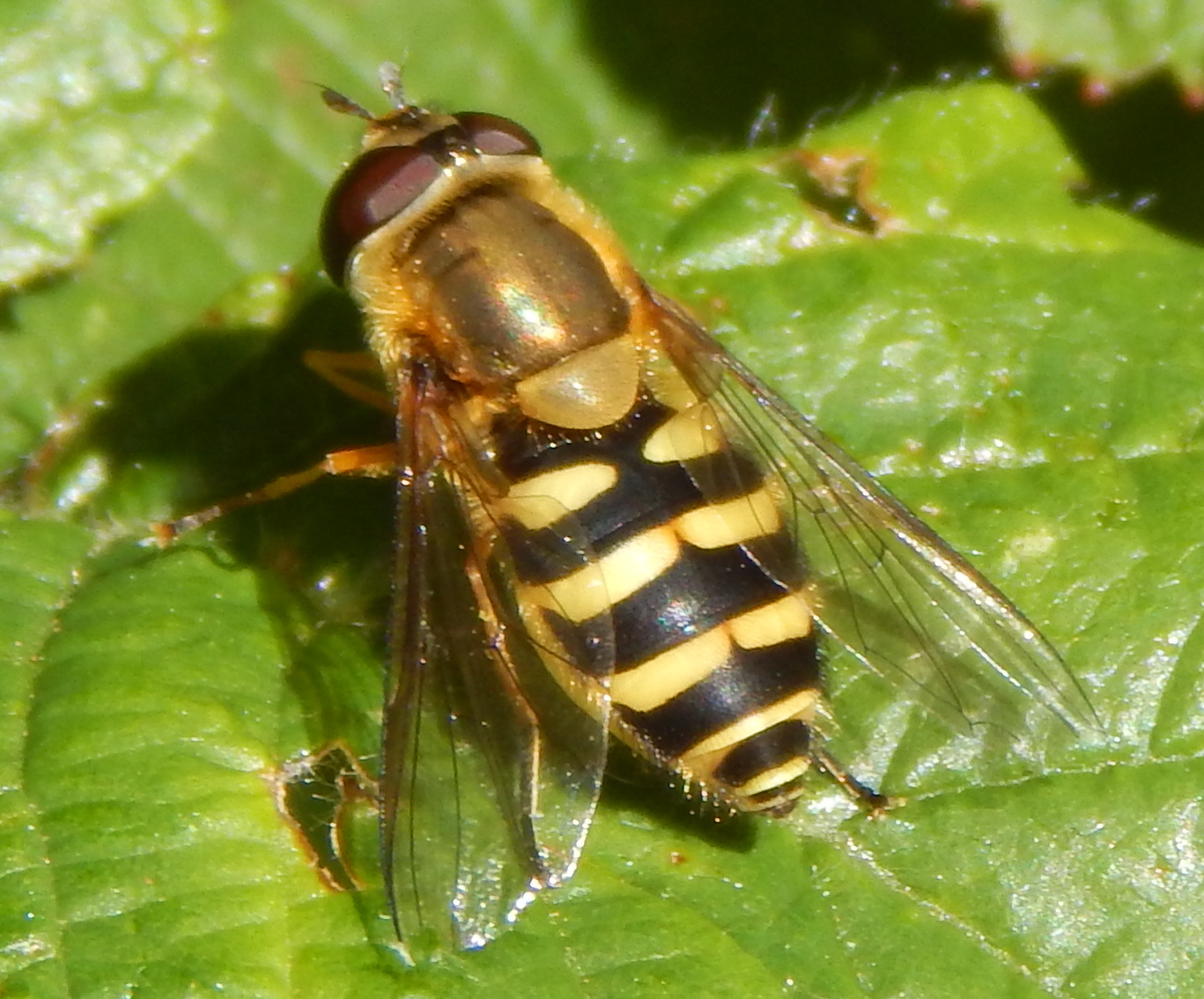
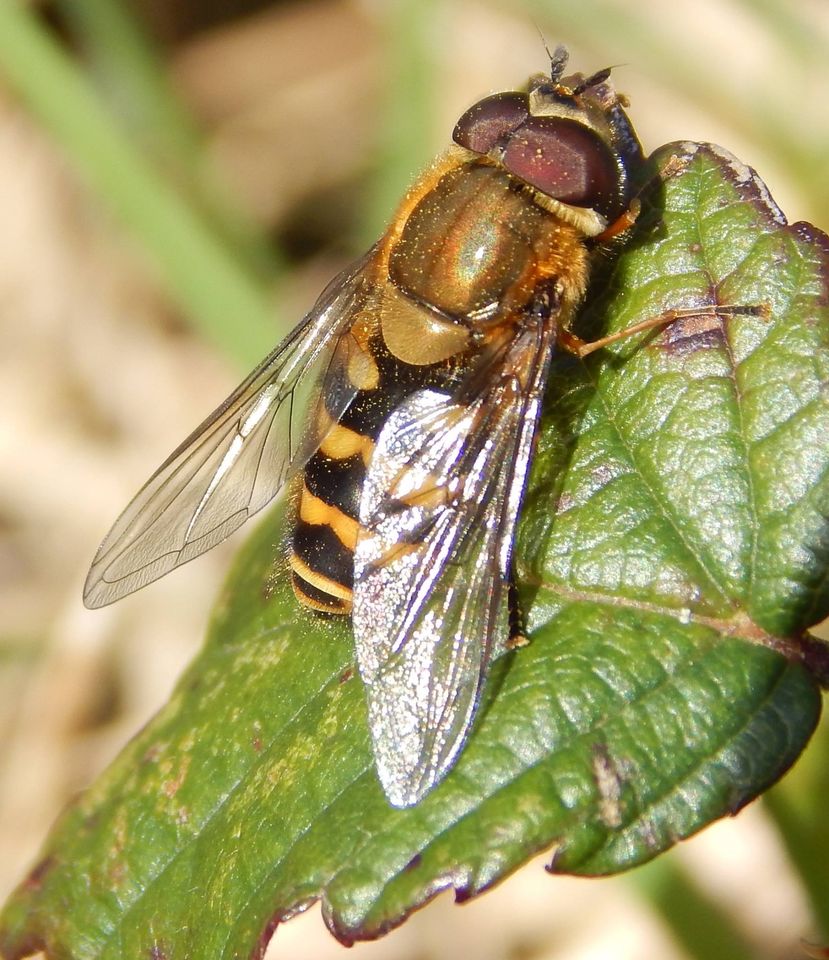

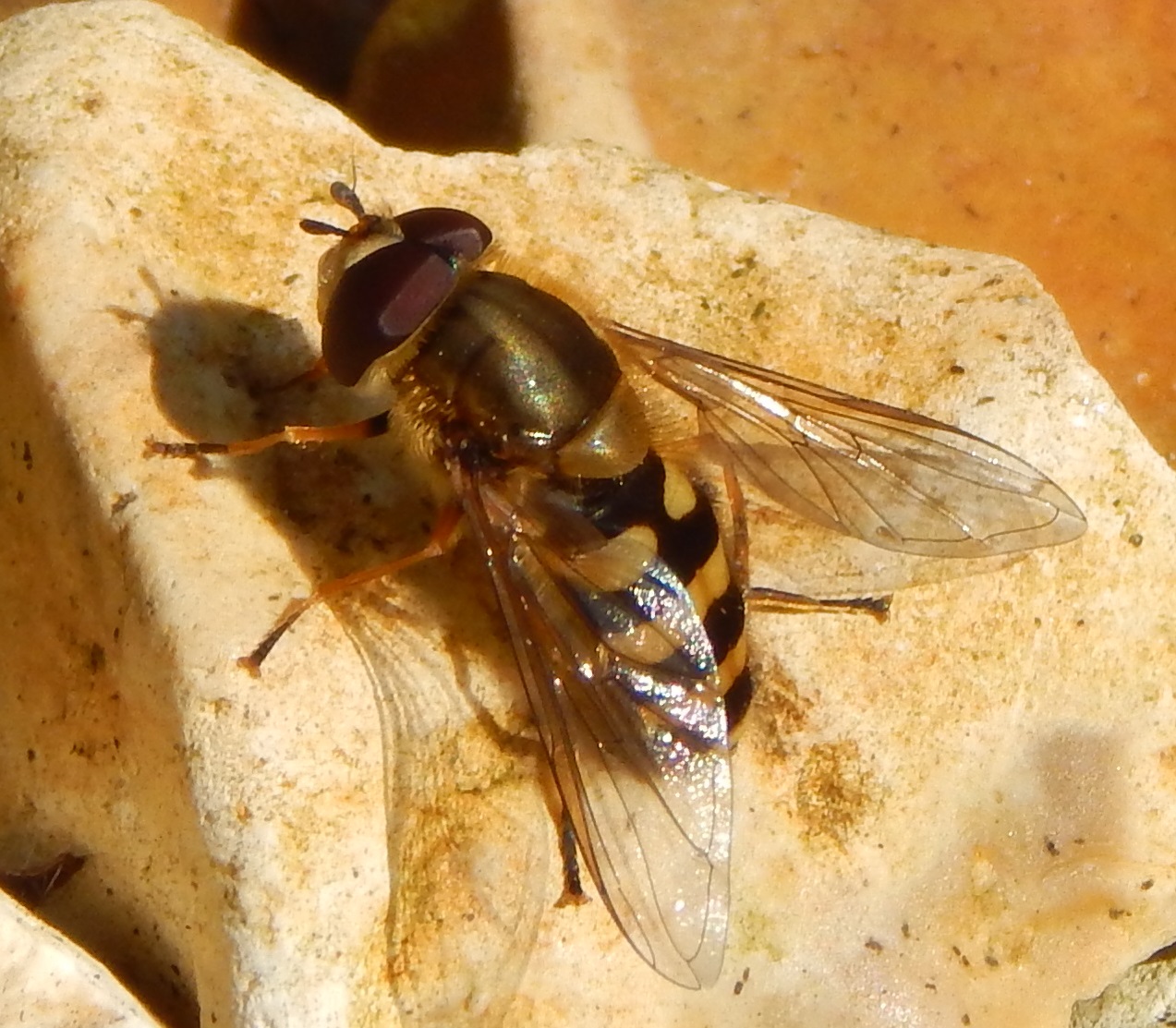
[B] Eristalis Species
There are about a hundred species of Eristalis, often called Drone Flies because of their superficial resemblance to [029] Honey Bees. The common British species are Eristralis arbustorum, Eristalis pertinax and Eristalis tenax, shown below.



Their larvae, called rat-tailed maggots, are aquatic.
[C] Others
- Cheilosia illustrata

- Chrysogaster solstitalis

- Epistrophe elegans

- Episyrphus balteatus, Marmalade Fly


- Eupeodes corollae

Eupeodes nitens is also seen in the UK.
- Helophilus pendulus, Sun Fly
The name Helo-philus pendulus, from Greek and Latin roots actually means dangling marsh-lover, but it is often called the Sun Fly because of confusion between helo- and helio-. Unsurprisingly, it is sometimes mis-spelled.
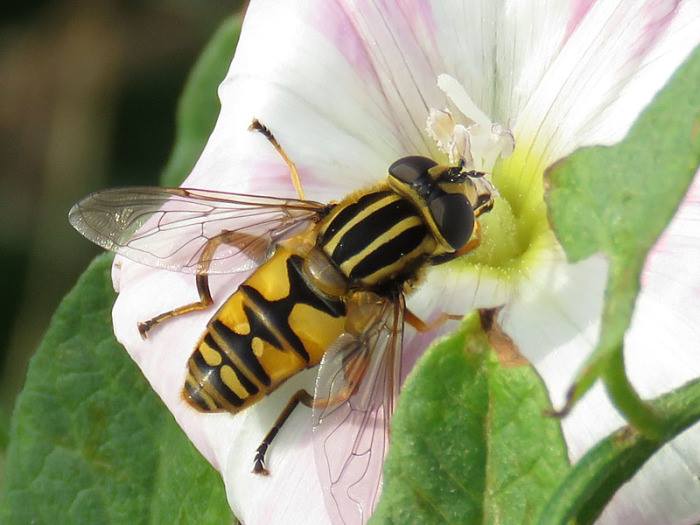
This fly is much more common than Helophilus trivittatus and Helophilus hybridus, which are also seen in the UK.
- Melanostoma scalare
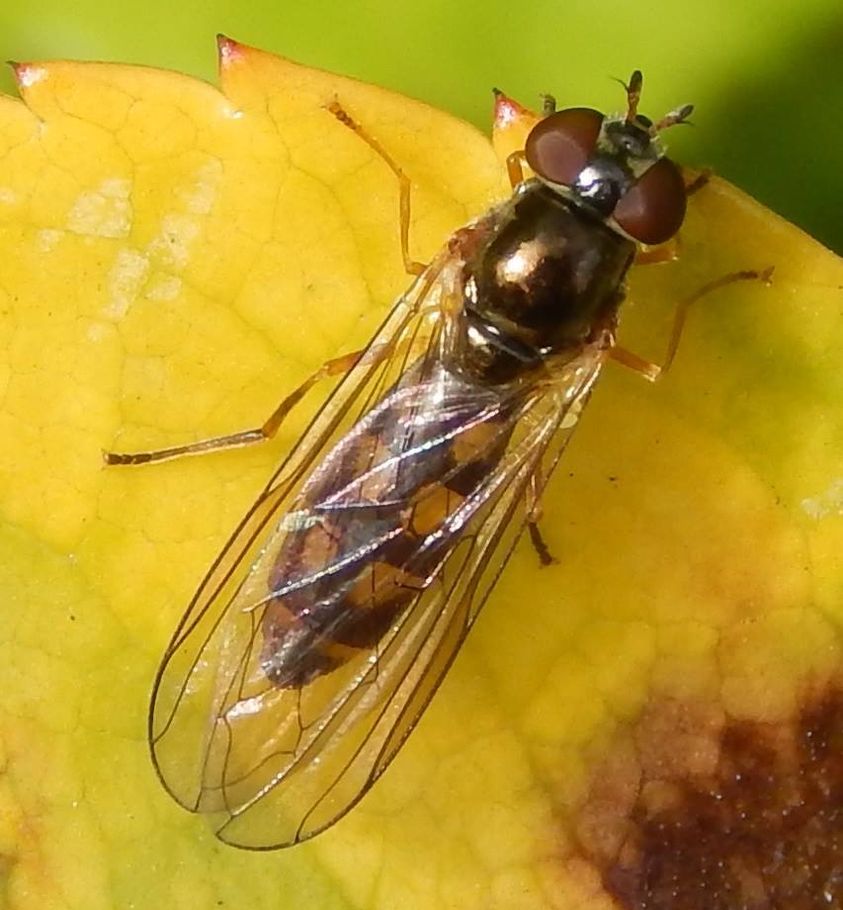
- Meliscaeva auricollis

- Myathropa florea
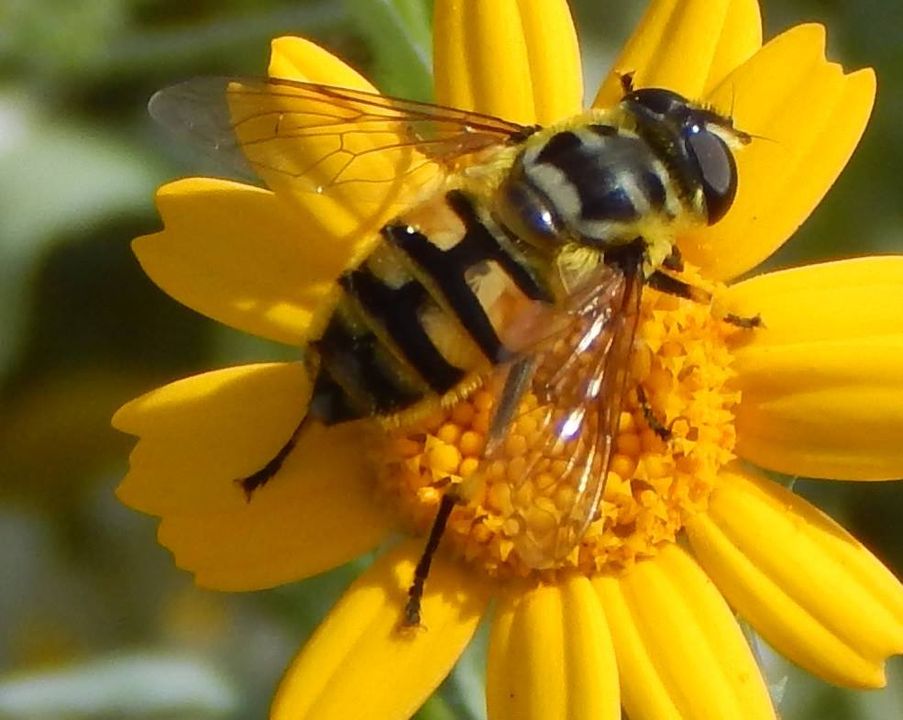
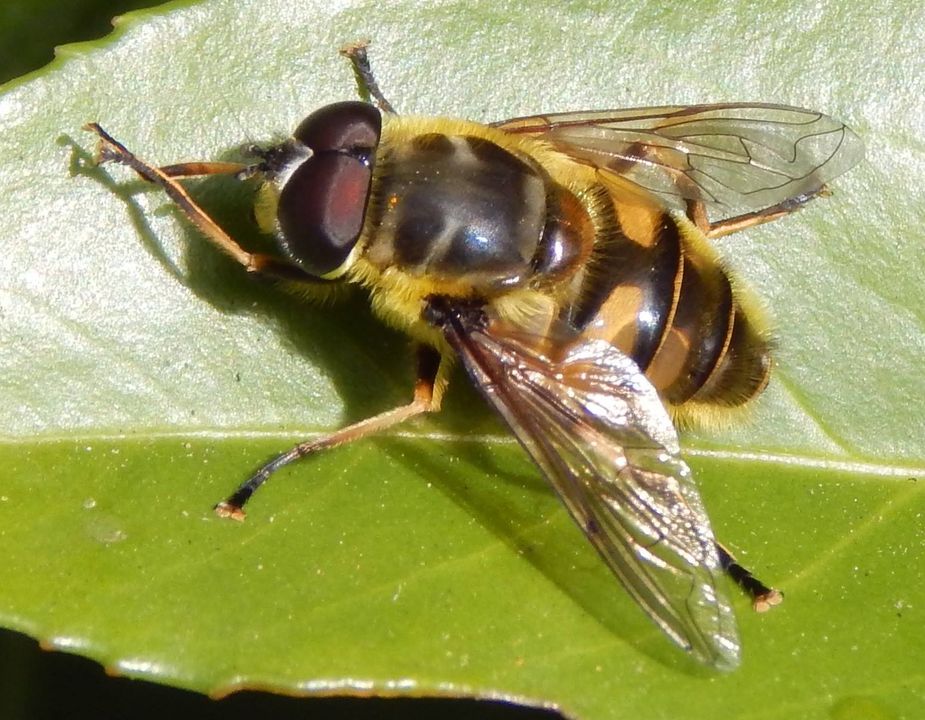
- Parasyrphus punctulatus

- Rhyngia campestris
This is very distinctive. All species of Rhingia have a distinctive long snout that enables them to feed from, types of flowers inaccessible to other flies.

Rhyngia rostrata is also seen.
- Sphaerophoria scripta, the Long Hoverfly
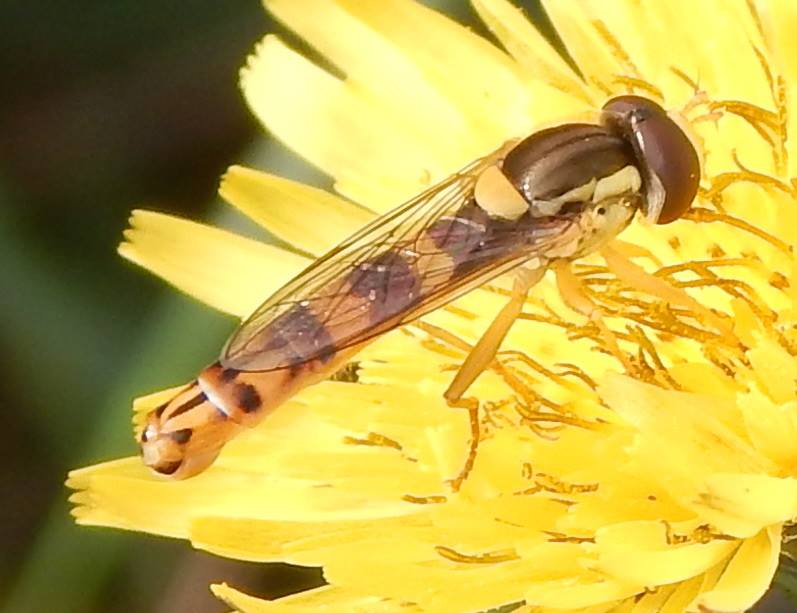
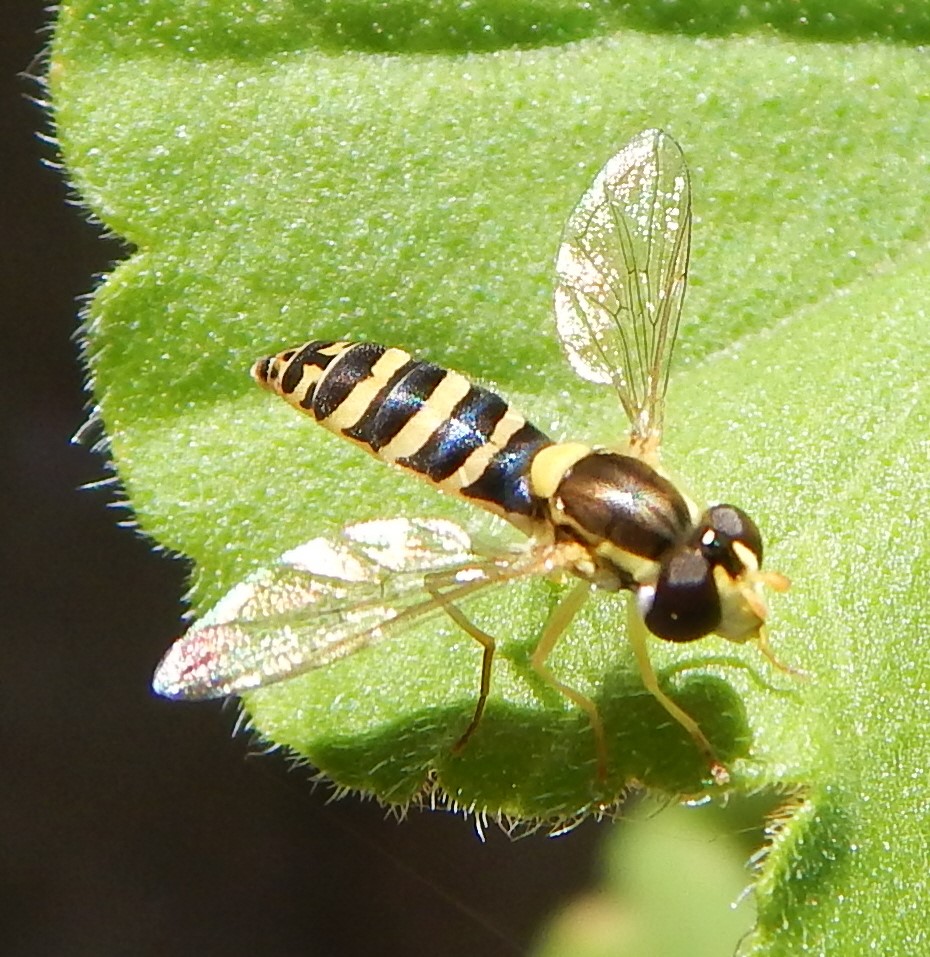
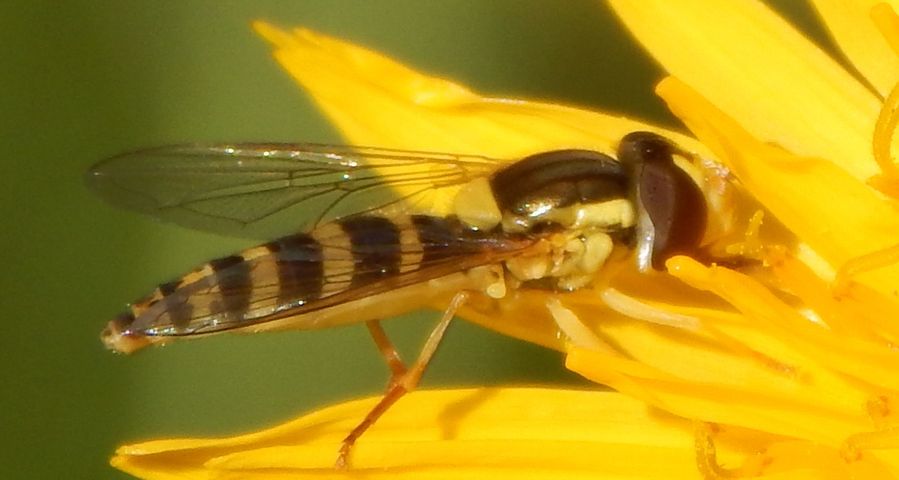
The first picture above is a male. The other two are female.
- Xanthogramma pedissequum
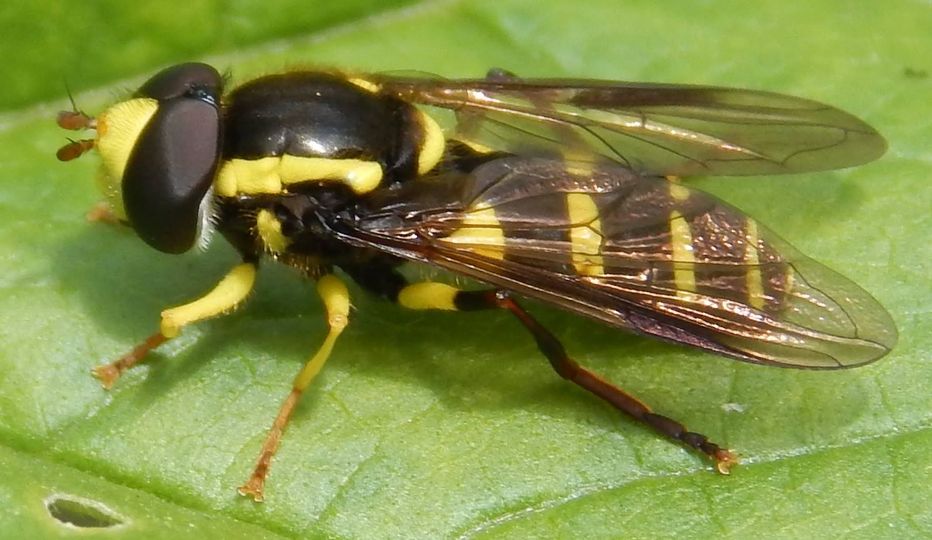
Other Notes
You will see hoverflies everywhere and you may be able to learn to identify some species.
See also
The largest hoverflies you are likely to see in the UK are [205] Leucozona and [361] Volucella, which is still to come.

